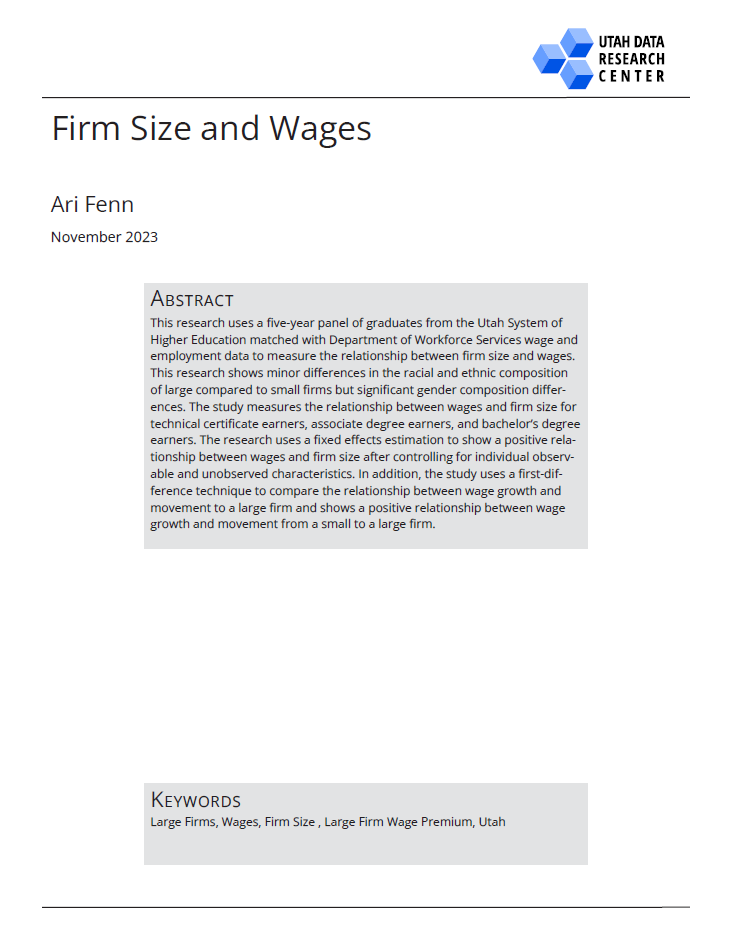Overview
This research describes the relationship between firm size and wages. In this research, companies are divided between small and large firms. Large firms are those with 250 or more employees. The wages of Utah bachelor's degree, associate degree, and technical certificate graduates from public universities and technical colleges who graduated between 2011 and 2014 (USHE graduates) were observed in the first five years after graduation. Wage, employer, and education data come from the UDRC databases. Employers were matched to the Department of Workforce Services' Quarterly Census of Employment and Wages Firm Find data to determine if an employer was considered large or small.
Summary of Findings
Finding 4: Wages and wage growth are higher consequent to time spent in large firms.


